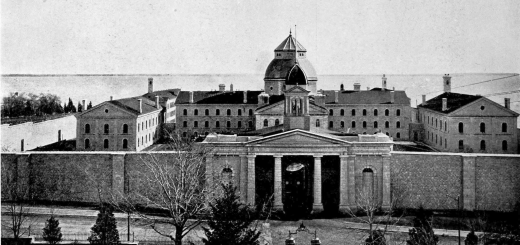Rogue Juror? R v Pannu and Protecting Jury Deliberation
The film 12 Angry Men is a classic representation of the diverse personalities that come together on a jury and the challenges of reaching a consensus. In it, we see how group dynamics constantly evolve as the jury struggles to meet their obligation of delivering a sound verdict.
Last week, the Court of Appeal for Ontario (“ONCA”) in R v Pannu, 2015 ONCA 677 dealt with this very issue. The justices ruled on a case that concerned a jury member bringing extraneous information into the jury deliberation room. The main point of contention was the potential influence that this unauthorized information would have on other jury members and thus the integrity of the verdict itself. Though there is a presumption that jurors understand and will follow the instructions they are given, this presumption is nonetheless rebuttable.
In this case, two men were charged with possession of a controlled substance for the purpose of trafficking. The jury ultimately found the men guilty. Shortly after the jury was excused, a Court Services Officer found a document left on the table in the jury room—a typewritten note that contained references to the Casey Anthony murder trial in the United States, with a critique of that jury’s decision to find her not guilty. Excerpts of standard jury instructions from the Canadian Judicial Council website were also typed out in the document.
Once brought to his attention, the trial judge conducted an inquiry and asked all the other jurors whether they had read the document. He did not ask, however, whether they had relied on the document in reaching their verdict. The judge found that since the material had only been read in its entirety by one juror, and only partially by another, it did not constitute a serious breach.
On appeal, the defense argued that bringing extraneous materials into the jury room caused a miscarriage of justice and warranted a new trial. Based on the facts, the ONCA disagreed and allowed the convictions to stand.
The Jury as Our Peers
In legal proceedings in Canada, we expect a lot of our jury members. The routine of work, family, and recreational life is disrupted and, while necessary for the proper administration of justice, jury duty is commonly viewed as an inconvenience.
In addition to putting their lives on hold, individuals selected to sit on a jury are required to meet their task with an objective and sober mind that is free from any ideological and cultural predilections. But is this expectation realistic? Can jurors mute their personal belief systems to meet the requirements of our justice system?
In Canada, we do not engage in extensive interviews of potential jurors as is done in the United States. We do not have the same opportunity, therefore, to screen out individuals that harbour certain viewpoints or ambitions to potentially disrupt a verdict. But there is good reason for this; indeed, the very purpose of having a “jury of our peers” is that we assume our neighbours, colleagues, and other responsible members of our community will be in the best position to make the most difficult decisions. We want a jury of our peers because we assume that they can be trusted to deliver justice fairly by reflecting the values of our community. In addition, at least when it comes to criminal matters, an individual must be held accountable by the very group they offended by their impugned conduct: the public.
The problem, however, lies in how far we allow jurors to go in superimposing their idiosyncratic views on the deliberation process.
Is Exclusion of “Extraneous Information” Practical?
Looking carefully at the actions of the juror in this case, is there truly a difference between bringing in a document to a deliberation that is suggestive of a juror’s particular view, and the same juror verbally asserting a view or information that could be seen as “extraneous” to the process? In other words, would a verbal statement be met with the same level of suspicion had the trial judge been notified of the statement? I suggest that the only reason that R v Pannu reached a provincial appellate court is because the information shared by the juror was in written form and a Court Services Officer found the note.
It is not far fetched to assume that during jury deliberations, emotions will run high and members of the jury will sharply articulate opinions about the evidence. Some expressions may even be inappropriate—but we view this as part and parcel of reaching a verdict. We presume that, as adults, jury members will work through the complex group dynamics that come with making difficult decisions.
While I certainly do not think that we should allow juries free reign to physically bring anything they wish into deliberations, I do think we need to recognize that jurors are inevitably bringing their own biases, life experiences, and ideological persuasions. As a result, it is better to take a principled approach, as the trial judge did here, on a case-by-case basis if concerns of jury influence arise. We should not be quick to draw the conclusion that a jury is tainted because of one person’s actions. In fact, R v Pannu is an excellent example of a jury’s ability to self-regulate and quash the ambition of one of its members to impart irrelevant information.
R v Pannu also demonstrates why we have the common law jury secrecy rule. Also called Lord Mansfield’s rule, the jury secrecy rule prohibits a court from collecting evidence of jury deliberations for the purpose of impeaching the jury’s verdict. Jurors cannot be asked and cannot testify about the effect of anything on their or on other jurors’ minds, emotions, or ultimate decision. [R v Pan; R v Sawyer, [2001] 2 SCR 344]. If, however, there is evidence of facts, statements, or events extraneous to the deliberation process that may have tainted the verdict, then the court may consider these facts (R v Pannu, para 65).
Appropriate Intervention
Because of the jury secrecy rule, we cannot gauge the general effect of extraneous information on the ultimate verdict—but we can nonetheless gauge whether improper influence has been inflicted on the jury (para 73). In my view, the only time a judge should step in is where there are serious concerns about a juror threatening other members of the jury or is extreme in their disregard of jury instructions and evidence presented at trial. Beyond that, we need to accept the reality that jury deliberation will not be a perfect process as long as imperfect human beings are asked to carry out the task.
While the presumption that a jury will understand and follow instructions is rebuttable, an effective rebuttal should rightfully meet a very high standard. The “irregularity” that we saw here was not “sufficiently significant or pronounced” to amount to a miscarriage of justice (para 91). In R v Pannu, the ONCA was right to respect the jury’s freedom and ability to work through the inevitable distractions that arise in meeting their duty as triers of fact.








Join the conversation